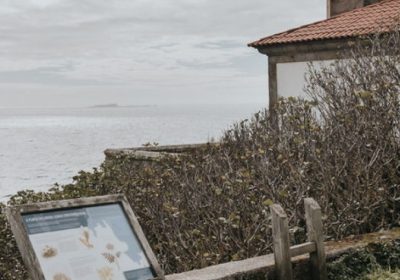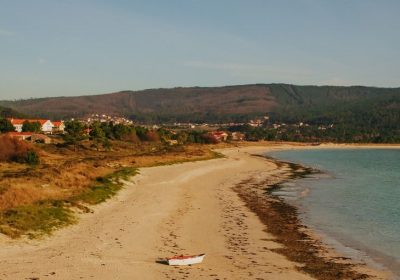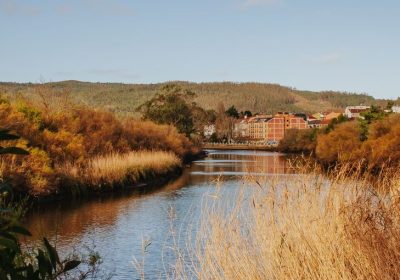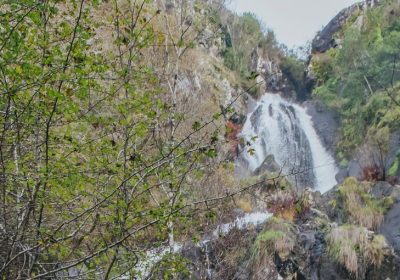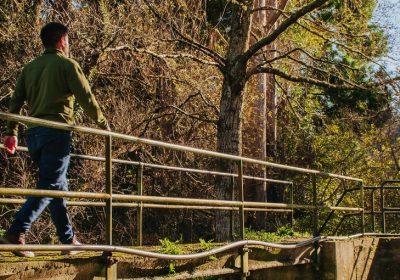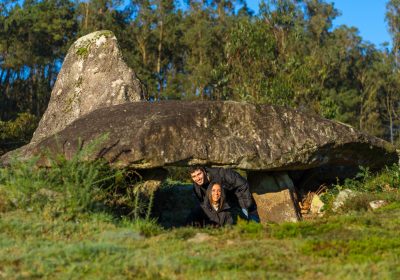SPECIFICATIONS:
Total kilometers: 41 kilometers.
Access by vehicle: Pedra Cuberta, Arca da Piosa (By dirt track), Mina da Parxubeira.
Access on foot:
- Pedra Moura do Monte Cárneo: 200 meters from the road.
- Pedra da Lebre: 30 meters from the road.
- Arca do Rabós: 70 meters from the road.
This route takes you through some of the most important megalithic monuments in Galicia due to their monumentality and good state of preservation.
We begin the tour at Pedra Cuberta, in the parish of Treos in Vimianzo.
It was studied by German archaeologists Georg and Vera Leisner in 1933 and inside they discovered the first paintings inside a dolmen in Galicia and one of the first in Europe.
We continue through the parish of Treos to the second stop, Pedra Moura.
Located in a well-kept meadow environment, it preserves very well the mámoa (earth mound) and its megalithic structure with the chamber and the corridor.
Inside were paintings that allowed the dolmen to be dated to the fourth millennium BC. C.
A few kilometres away, very close to the road, is the next dolmen, Pedra da Lebre.
Although the monument is quite altered, it still retains much of its original monumentality.
In it, evidence of painting was discovered that, once analyzed, provided one of the oldest dates of Galician megalithism, between 5,300 and 4,700 BC. C.
The next stage takes them through a forest road to the Arca da Piosa, in the municipality of Zas.
It is one of the largest dolmens in Galicia, with stone slabs weighing more than six tons.
But it is also well known thanks to a poem by Pondal, “Á hora en que doce o luceiro”, included in his famous work “Queixume dos Pinos” (1886), where he speaks of A Piosa as the tomb of the mythical warrior Brandomil.
From A Piosa, the route takes us back to the municipality of Vimianzo, specifically to Baíñas.
Very close to the nucleus is the Arca do Rabós.
This small dolmen preserves its mámoa (tumulus) very well and is integrated within one of the largest necropolises of A Costa da Morte, called Chan do Rabós and Chan do Cabral.
Not far away, right on the border between the town halls of Vimianzo and Dumbría, is another of the most iconic megaliths in Galicia, Pedra da Arca.
The dolmen is magnificently preserved with its chamber and its long corridor almost intact.
In addition, inside, there are remains of prehistoric paintings and some engravings.
Among the motifs is a curious figure called “The Thing” by the Irish archaeologist Elisabeth Shee.
Its meaning is unknown, but some authors interpret it as an axe or even a sperm whale.
Our last stage takes us through the lands of the Mazaricos Municipality to A Mina da Parxubeira. A dolmen located in an idyllic setting, in the middle of a beautiful meadow.
Excavations carried out here in the 1970s and 1980s provided extraordinary results such as a rich grave goods and a set of anthropomorphic idols standing in front of the entrance to the megalith, protecting the monument.


